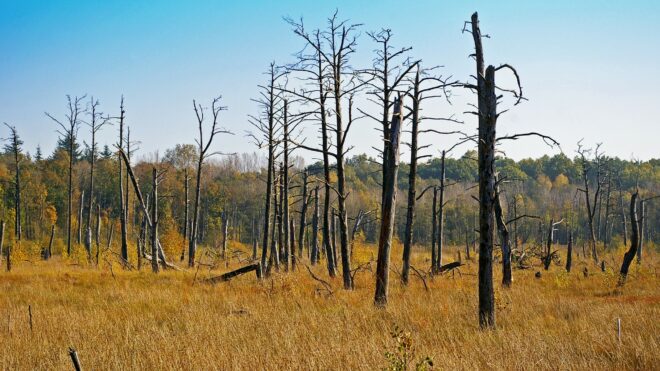Did you know that there were 16,000 reports of high winds and thunderstorm damage in the United States in 2020? These severe weather events cause property damage and uproot trees, leaving messes and dangerous situations in their wake.
Old trees are particularly at risk during these storms. For an old tree, care can mean the difference between drying out and dying vs staying alive and healthy for years to come.
You may be looking at the tree in your backyard and thinking, “Is my old tree healthy? How can I tell?” Here, we break down five of the signs that your old tree may be sick or dying.
1. Brittle Bark
Trees have bark to protect them from weather changes, insulate them from damage, and keep them hydrated. On a healthy tree, it should be well hydrated and firmly attached to the trunk.
When bark dries out and peels away from the trunk, it indicates that something is wrong with the tree. If the bark is peeling in a single spot, it may be possible to treat the localized spot and save the tree. If the bark throughout the tree is brittle, it means there are larger issues with the tree’s health, usually related to hydration or infection.
2. Root Damage
When a tree is too old, its root system may become compromised.
If the roots become partially exposed, they may sustain damage from the elements or wildlife. Nearby construction projects can disrupt the root system and cause damage to your tree. Even too much walking around an aged tree can compact the soil around the roots, leaving them without access to the aeration they need to survive.
It’s difficult to visually determine whether a tree’s root system is damaged. One telltale sign of root damage, though, is if the tree begins to lean to the side.
3. Dead Leaves
The leaves of deciduous trees should dry out and fall off the tree in the autumn and winter. However, if this happens at any other point in the year, or if the leaves don’t grow back in the spring, your tree needs some help.
As with dry and brittle bark, this could be an indication of poor hydration, lack of nutrients, overfertilization, or infection. Your local experts will help you diagnose the issue and determine the appropriate solution.
4. Dead Wood
It’s normal for healthy trees to experience some limb breakage and dead wood, especially if you don’t have a regular pruning schedule set up. (Although to keep your tree in the best health possible, you should be pruning and trimming it regularly).
Too much dead wood falling off your tree is abnormal and belies an issue with your tree’s long-term health. Schedule a call with an expert right away if you see this happening.
5. Pests
Various kinds of animals, insects, and fungi make their homes exclusively in dead trees or in trees that are in the process of dying. Ants, beetles, mushrooms, and fungus growing and living in and around your tree are indicators that your tree either needs treatment or needs to be removed from your yard altogether.
Monitor Your Old Tree for Symptoms
Now you know five of the signs that your old tree needs some TLC. Check for dried-out roots and bark, dead leaves and branches, and the presence of pests in and around your tree. If any of these things come up, it’s time to call the experts to help you make a game plan for what to do next.
If you need tree service experts in the greater Puget Sound, we’re here to help. Fill out our contact form today, and we’ll reach out with a free written estimate!

